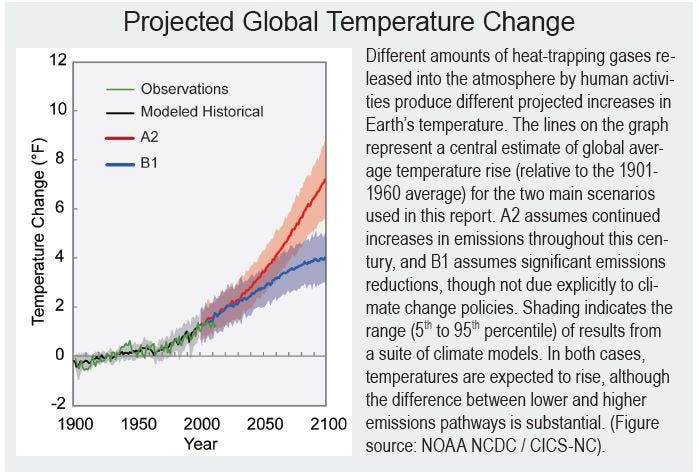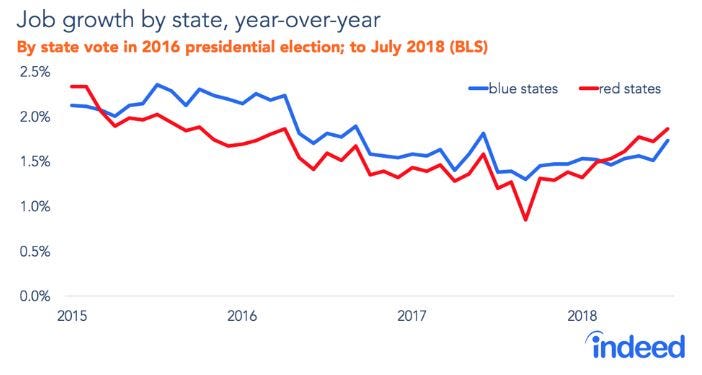By Kent R. Kroeger (Source: NuQum.com, January 5, 2019)
Over time I compile a list of assertions, statements, and rumors told to me by friends, colleagues, online stalkers and perfect strangers at the TGIF Friday’s bar in Princeton, New Jersey. Occasionally, for the claims I find particularly interesting, I even try to verify them. Here are five that I found most interesting and might be true:
Conditions in countries have worsened where the U.S. has recently pursued regime change.
This statement I heard at the TGIF Friday’s bar and was attributed to Kentucky Senator Rand Paul. It is a harsh indictment of U.S. military interventions…and hard to prove.
But…when I returned home I looked up the historical data from the United Nations Development Programme’s Human Development Index (HDI) (see Figure 1 below).
Figure 1: Human Development Index (1990–2017)

With any time-series analysis, where you establish the start and end points are critical to what conclusions are drawn. However, the three most recent countries in which the U.S. military has directly or indirectly intervened in pursuit of changing an existing regime — Libya 2011, Syria 2011 and Yemen 2015 — all have experienced significant declines in human development from the point U.S. involvement started to the present.
Even the two countries where the U.S. has had its most significant combat engagements (Afghanistan and Iraq), while they have seen an increase in their absolute human development index scores, their relative position worldwide has not increased significantly. Iraq, in fact, has gone from being ranked 114th in 2004 on the HDI down to 120th in 2017. Afghanistan’s HDI rank has moved from 170th in 2004 to 168th in 2017.
While there have been specific areas where the U.S. has improved conditions in Iraq and Afghanistan (e.g., access to education, particularly for females), the overall development measures have not witnessed substantive improvements.
In comparison, it is interesting that Iran — perhaps the one country the U.S. most wants to see the ruling regime fail — has seen dramatic human development improvements. In 2004, Iran ranked 90th on the HDI — as of 2017, the country now ranks 60th. This improvement has been aided by the Iraq War, the Obama administration’s rapprochement and the Joint Comprehensive Plan of Action (“The Iran Nuclear Deal”) in 2015. Sadly, Iran’s HDI score is most certainly going to decrease going forward given the renewal of U.S. economic sanctions against the country.
Overall, the assertion attributed to Sen. Rand about U.S. regime change wars is largely accurate.
Of its own volition, the U.S. military never leaves a country where it has stationed combat troops.
By definition this is true, since the U.S. military cannot independently make the decision to deploy combat troops, or decide to remove them once they’ve been deployed. That is a decision reserved for the Commander-in-Chief and the military’s civilian leadership. However, I cannot think of a single instance in U.S. history when the military led an initiative to get out of a country where combat troops were deployed. It just doesn’t happen that way — and maybe it shouldn’t. Per the Constitution, civilian leaders are supposed to lead defense and security policy, not the military. So this statement can be marked down as an absolutely true one.
Liberal academics are renouncing their U.S. citizenship and leaving the country.
This one I heard from a friend married to an academic. “How will we survive?” was my sarcastic response. He didn’t laugh either.
Unfortunately, I cannot find any evidence supporting the claim that PhDs are increasingly choosing to live in other countries, much less renouncing their citizenship. However, there is one interesting trend among Americans regarding citizenship. Since changes to U.S. tax law by the Obama administration, it has become more difficult for Americans to evade taxes by hiding money offshore.
The result has meant many Americans living overseas face an overly complex filing process at tax time, leading some to even renounce their citizenship in order to simply their life.
According to the Internal Revenue Service, in the first quarter of 2018, 1,099 Americans gave up their citizenship and more than 5,000 did so in both 2016 and 2017.
Among those thousands renouncing their U.S. citizenship are sure to have been some academics, so I cannot categorically dismiss my friend’s claim, who did in fact offer a specific story about someone so offended by the Trump presidency they chose to leave the country. But that is merely anecdotal evidence. For now, assume liberal academics are choosing to stay put.
Even under the most pessimistic assumptions about climate change, the U.S. economy is still expected to grow close to its current 10-year average.
In critiquing the last fall’s U.S. Government’s Fourth National Climate Assessment (NCA2018), Michael Bastasch, energy editor for DailyCaller.com, highlighted one of the more speculative forecasts made in the NCA2018:
According to the NCA2018, “global greenhouse gas emissions is expected to cause substantial net damage to the U.S. economy throughout this century,” including a 10 percent hit to gross domestic product (GDP) in one extreme scenario where global temperatures exceed the pre-industrial average by 8°C.
This economic forecast, based on an extreme case scenario which few climatologists expect to occur (Representative Concentration Pathway [RCP] 8.5), has become a straw man for climate change skeptics. Never mind that any 80-year (!) economic forecast must be accepted with a grain of salt, the researchers behind the forecast recognize the extraordinary methodological challenges in linking rising temperatures to economic costs.
I would normally, therefore, be content scolding The Daily Caller’s energy editor for setting up an obvious straw man argument by taking out of context a single, speculative economic forecast from a 1,600-page report containing many more substantive conclusions.
Unfortunately, the climate change extremists in the mainstream news media jumped on the “10 percent hit on GDP” forecast with even more unrestrained relish than the climate change skeptics.
Climate change will severely affect the U.S. economy, ABC News (Nov. 24, 2018): “A newly released report issued by 13 federal agencies on Friday explains in great depth the potential consequences of climate change on the United States and warns that neglecting to take action could drastically impede economic growth over the next century.”
Mass deaths and mayhem: National Climate Assessment’s most shocking warnings, CBS News (Nov. 25, 2018): “An estimated loss of up to 10 percent gross domestic product by 2100. By comparison, that would be more than twice the 4.3 percent GDP loss of the Great Recession.”
3 big takeaways from the major new U.S. climate report, Vox.com (Nov. 24, 2018): “By the end of the century, warming on our current trajectory would cost the US economy upward of $500 billion a year in crop damage, lost labor, and extreme weather damages. This is almost double the economic blow of the Great Recession in the early 2000s.”
After a few days of national media hyperventilating, an actual climate scientist pumped the brakes and pointed out how the ’10 percent GDP decline’ was unrealistic and did not reflect current thinking within the climate science community.
Univ. of Colorado climatologist Roger Pielke, Jr. noted that the ‘10 percent GDP decline’ prediction was based on a temperate rise scenario (+8°C) twice as extreme as any made elsewhere within the NCA2018.
The following chart is pulled from the original research paper the NCA2018 used to draw the ’10 percent GDP decline’ conclusion (Figure 2).
Figure 2: Direct damage forecasts (% of GDP) due to global warming

The ’10 percent GDP decline’ conclusion is derived from drawing an horizontal line from the last data point forecast (RCP 8.5) at the 8-decade time period (far right). As Pielke, Jr. points out, the RCP 8.5 global warming forecast is far outside mainstream expectations.
The far more reasonable takeaway from Figure 2 is that the predicted economic losses range from −0.1 to 1.7% GDP (at 1.5°C of warming), 1.5 to 5.6% GDP (at 4°C of warming), and 6.4 to 15.7% GDP annually (at 8°C warming).
The National Oceanic and Atmospheric Administration (NOAA) produced the following graph (Figure 3) showing the recent predictions about the global warming through 2100, given different scenarios on how quickly humankind limits greenhouse gas emissions.
Figure 3: Projected global temperature change

The red line (A2) from the above chart is the temperature change prediction assuming the world does almost nothing to curb greenhouse gas emissions through this century. That scenario is already OBE (overtaken by events). The U.S. is no longer building coal plants and Europe is projected, at current trends, to transition to 100-percent renewable electricity generation by 2050.
The blue line (B1), on the other hand, shows the temperature change prediction under the scenario that the world experiences significant emissions reductions, though not necessarily due to aggressive climate change policies. In other words, the world will convert to renewable energy sources only as the economics makes them more profitable than fossil based energy sources. In this scenario, the world will be 4°C warmer (than the pre-industrial period) by 2100.
That is a realistic view of global warming and suggests, based on the economic impact research, that the U.S. GDP will be 5.6 percent lower in 2100 unless we (which includes China, India, and Brazil) address climate change more aggressively.
To put that in perspective: Let us assume today’s U.S. economy is re-denominated at $100 Trump dollars (annual GDP). If our GDP grows between now and 2100 at the same rate as the past 10 years (1.4 percent), the U.S. economy will be at $308 (constant) Trump dollars.
Shave off 5.6 percent due to climate change and the U.S. is instead at $291 Trump dollars. That translates to an annual average GDP growth rate of 1.33 percent between 2018 and 2100. Or, as a comparison, it would be like having an annual GDP growth rate slightly lower than what we averaged during the Obama administration (1.5 percent).
In other words, climate change is a slightly bigger threat to the U.S. economy than was Barack Obama.
I would never argue that losing 5.6 percent of our GDP is insignificant, should this occur. But experience tells me that economic predictions looking 80 years into the future are more notional than practical. A nation certainly can’t make multi-billion or even trillion dollar policy decisions today based on such phantasms. It would be irresponsible to ourselves and future generations.
Frankly, the news media’s promotion of the ’10 percent GDP loss’ narrative is doing the climate change movement a terrible disservice. Even a ten percent under-performance in an 80-year forecast (!) is little more than statistical decimal dust. It’s noise in the forecasting model. For love of God, you certainly don’t draw up public policies based on such predictions.
Furthermore, there is no risk in making such a prediction The forecasters responsible for it will be long dead. And the immediate professional reward is potentially huge.
It’s not fake news. It’s worse. It’s junk economics cloaked in legitimate sciencethat could irreparably damage this economy if the climate change extremists should ever gain control of U.S. tax and regulatory code.
Let us all take a deep breath and not do anything stupid to wreck the economy.
Since Trump’s election, job and economic growth has been strongest ‘red states’.
Any economic claim should be accepted with a grain of salt, as economic benchmarks, aggregation levels and time periods used to draw conclusions are often subjective and easily manipulable. Nonetheless, in the most recent Bureau of Economic Analysis (BEA) report, quarter-to-quarter GDP growth was significantly stronger in ‘flyover’ country (see Figure 4).
Figure 4: Percent change in real GDP by state (2018:Q1 to 2018:Q2)

Of the ten fastest growing states between 2018:Q1 and 2018:Q2, seven were Trump-voting states (Arkansas, Florida, Kansas, Michigan, Missouri, Montana and Texas).
The job growth data is a little more complicated. Since March 2018, year-to-year job growth was stronger in ‘red states’ than ‘blue states,’ according to the U.S. Bureau of Labor Statistics (BLS) (see Figure 5).
Figure 5: Job growth by state

But when the focus is on counties — and not states — it is the ‘blue counties’ (often suburbs) that are leading the growth in the ‘red’ states, according to an analysis conducted by the AP. Could it be the best place to grow the economy is from a highly-educated ‘blue county’ in a low-tax ‘red state’? Now that is real bipartisanship.
So which number is correct? They both are, but I would caution using county-level data to understand an economy. Tax laws and other policy tools that most significantly impact an economy are typically implemented at the national and state-levels. Showing that highly-educated and employable people tend to live in nice suburbs is not an interesting finding and says little about the impact of economic policy. State-level job and economic growth data, however, is more informative about how economic policy impacts an economy and according to the most recent data, ‘red states’ are outperforming ‘blue states’ by a healthy margin.
How we express knowledge is like hitting in baseball: We fail most of the time (myself included)
We can never take for granted any fact we read or hear in the news media. It is not that the news media always lies or propagates ‘fake news’ on purpose (though it does, and here is a possible recent example). It is the fact that even science, where objectivity is an inviolable standard, is not immune from political bias. By our human nature, we tend to use evidence that conforms to our expectations and too readily ignore contradictory evidence.
Maybe you can get away with that as president, but for the rest of us, that is not a good way to go through life.
- K.R.K.
Comments and insults can be sent to: kroeger98@yahoo.com
